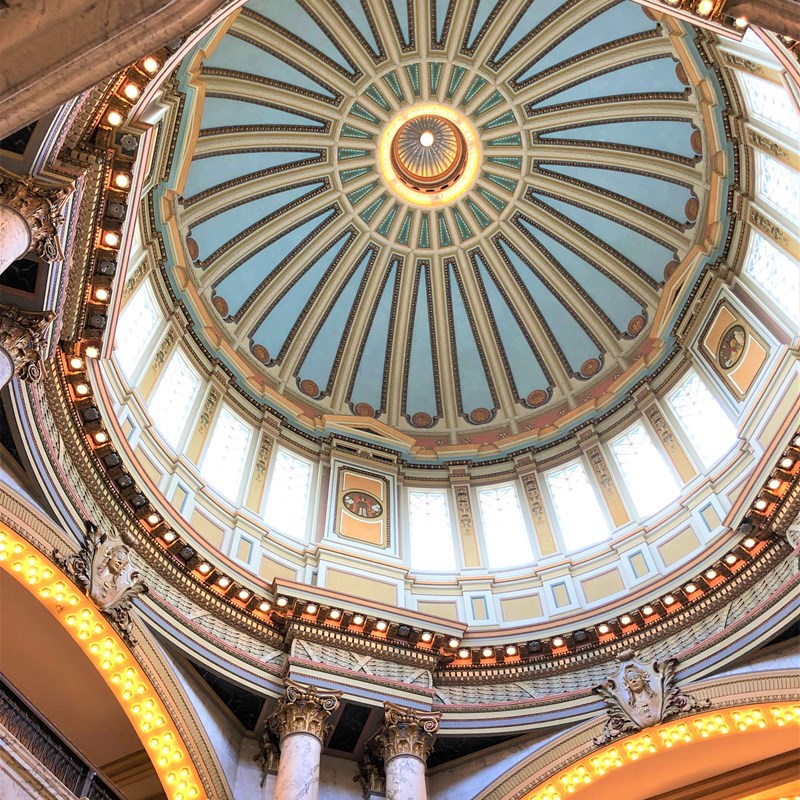Brief History of the Mississippi State Capitol

Designated as a Mississippi Landmark in 1986 and a National Historic Landmark in 2016, the Mississippi State Capitol has been the seat of the state’s government since 1903. The National Park Service describes the building as “…an exceptional example of the Beaux Arts style, vividly illustrating the nationwide spread of academic classical revival architecture in the early 20th century.”
While Governor Andrew Houston Longino was in office (1900-1904), the decision was agreed upon to construct a new Capitol. A design was chosen through an architectural contest, and the Capitol was built between 1901-1903 in 28 months on the site of the old state penitentiary. The 171,000 square-foot building was designed by Theodore Link, an architect from St. Louis, Missouri, and was constructed by the Wells Brothers Company of Chicago. Construction cost more than $1 million, which was funded by back taxes from a lawsuit settlement with the Illinois Central Railroad.
The State Capitol is the third capitol constructed in Jackson. The first building was completed in 1822 and no longer stands. The second building was completed in 1839, served as the Capitol until 1903, and today is the Old Capitol Museum.
Originally the Capitol housed all branches of Mississippi state government. Currently, the Legislative branch is the only one operating full-time inside the building. The Governor’s Office remains but serves as a part-time office.
The Hall of Governors on the first floor includes portraits of the former governors of Mississippi since the creation of the Mississippi Territory in 1798 and the state in 1817.
An ornate Rotunda, the center of the building, is located on the second floor. Rising above is the main dome that includes sculptures of the face of Lady Justice, paintings from 1934 representing part of Mississippi’s history, and 750 of the 4,750 original electric light fixtures illuminating the building. An eagle adorns the top of the exterior dome and is made of copper gilded with gold leaf. The eagle is eight feet high and 15 feet wide.
More than 10 types of marble from other states and countries are found throughout the Capitol. Stained glass and leaded glass windows, original to the building and crafted by Louis Millet of Chicago, Illinois, add beauty and natural light from the second to the fourth floors, along the Grand Staircase, and in the minor domes above the chambers of the House of Representatives and the Senate.
The former Supreme Court chamber, now a committee meeting room, is located on the second floor. The Legislature is housed on the third floor, along with the offices of the Lieutenant Governor, Speaker of the House, and the part-time/ceremonial office of the Governor.
The south side of the Capitol grounds contains one of the 55 replicas of the Liberty Bell; a monument dedicated in June 1912 honoring women on the home front during war sculpted by Belle Kinney of Nashville, Tennessee, and cast by Tiffany Studios of New York; and a plaque honoring the designation of this Capitol as a National Historic Landmark by the National Park Service in 2016. On the north side of the Capitol is the “Capitol Rally” marker as part of the Mississippi Freedom Trail commemorating the “March Against Fear” that began in Memphis and ended at the Mississippi State Capitol in 1966.
A four-year, $19 million restoration completed in 1983 and additional projects throughout the years help to preserve and maintain the original integrity of the building.
